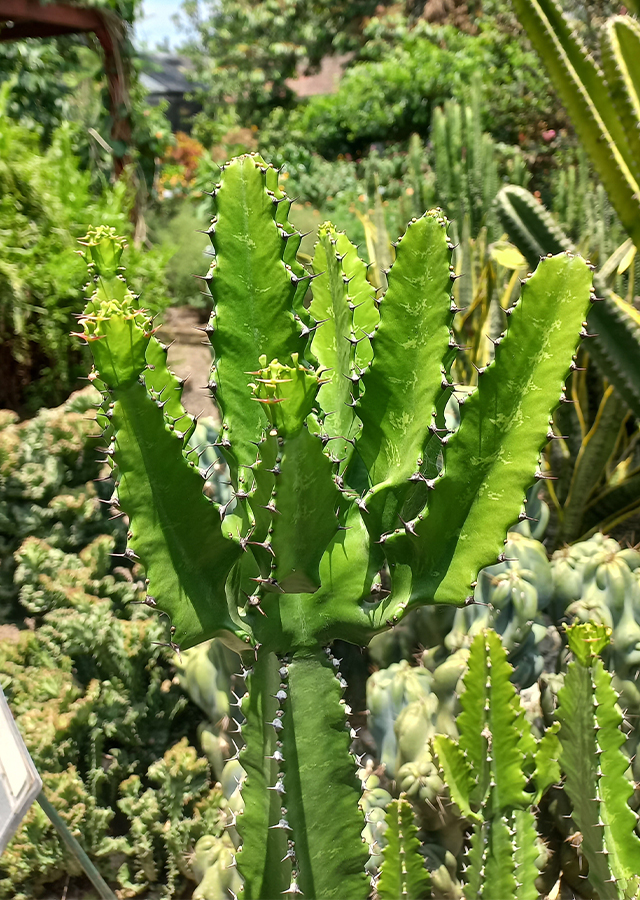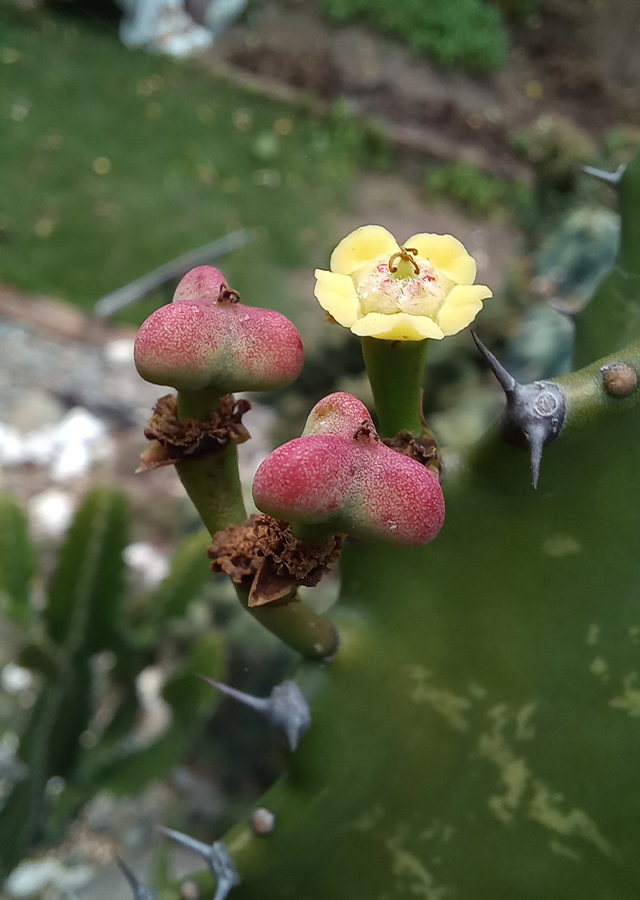Traditional Herbs from Euphorbia lactea
treating_skin_diseases
- Take one stem of the dragon bone cactus plant.
- Cut it and take the sap.
- Apply it to the skin.
warts
- Prepare enough dragon bone cactus.
- Slice it and take the sap.
- Apply it to the wart.
What is Euphorbia lactea Looks like??



Parts of Euphorbia lactea that could be used
- Sap
Euphorbia lactea Distribution
Dragon bone cactus or Euphorbia lactea originates from Sri Lanka. It has been introduced in tropical and subtropical areas and is now cultivated and naturalized in tropical Asia, tropical America, the West Indies, and many islands in the Pacific Ocean. E. lactea has a unique shape and has been widely planted and commercialized as an ornamental plant. This plant is also thorny so it is often planted as a hedge plant. Apart from being an ornamental plant and hedge plant, E. lactea also has health benefits. Where, traditionally E. lactea sap has been used in India and Africa to treat warts. However, you need to be careful when using it, because this sap can cause irritation and if it comes into contact with the eyes it can cause temporary blindness.Agroecology of Euphorbia lactea
E. lactea mostly grows in dry deciduous forests, dry disturbed sites, abandoned gardens, waste areas, roadsides, and arid and semiarid environments. E. lactea is also an abundant weed in coastal areas and sand dunes along the seashore. This species prefers conditions with partial to full sun exposure, on sandy and sandy loam soil with a pH ranging from 6.1 to 7.8, well-drained and able to grow in nutrient-poor soil. The average annual temperature ranges from 17 - 35 ºC, the average annual rainfall is 750 - 2,000 mm. This species can adapt well to dry areas and water-deficient habitats, and has succulent stems and water storage tissue.
Morphology of Euphorbia lactea
- Fibrous roots.
- Flesh or succulent stems, many branches, hairless, produce abundant milky sap when injured, short thorns brown to black in color. Stems with whorls of branches almost to the base but in large plants shed thorny tissue and develops round, broken brown stems. Branches with 3 corners (sometimes 4 corners). Dark green, slightly shiny, with yellowish or whitish streaks in the axial grooves between the corners.
- Leaves few, scattered, alternate, stemless, round, slightly shiny green, succulent, rather thick and fall off early, or absent.
- Flowers are small, yellowish green- brass, appearing intermittently in small groups along the edge of the stem.
- 3-lobed capsule fruit, rare or absent in cultivation.
Cultivation of Euphorbia lactea
Plants are propagated generatively through seeds and vegetatively through cuttings and stem cuttings.
Euphorbia lactea, more details :
Chemical Content of Euphorbia lactea12-Deoxy-4.beta.-hydroxyphorbol-13-dodecanoate-20-acetate-24-methylene cycloartenol, euphorbol hexacosanoate, tinyatoxin, ingenol triacetate, resiniferonol-9,13,14-orthophenyl acetate, and 12-deoxyphorbol-13/ 2-methyl/butyrate-20-acetate.
Benefits of Euphorbia lactea
Treating skin diseases, warts.
Simplisia of Euphorbia lactea
Another Facts for Euphorbia lactea :
Synonym of Euphorbia lacteaEuphorbia lactea Roxb.
Habitus of Euphorbia lactea
Succulents. Succulent, annual (perennial) up to 5 m high and stem diameter around 15-20 cm
Habitat of Euphorbia lactea
- Forest", "Coastal", "Roadside", "Shrub Area", "Grassland", "Land
No comments:
Post a Comment